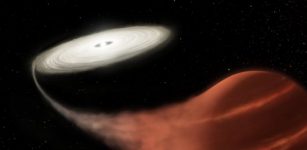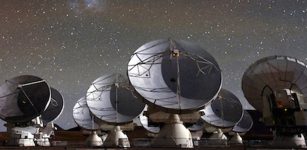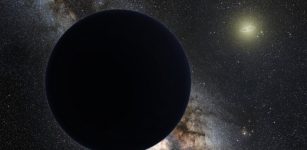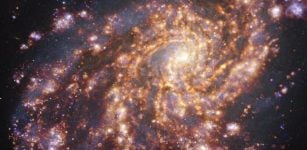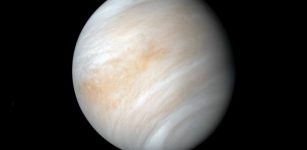It Wasn’t A Planet But An Expanding Dust Cloud From A Cosmic Collision
Eddie Gonzales Jr. – MessageToEagle.com – What was thought to be an exoplanet in a nearby star system likely never existed in the first place, according to UArizona astronomers.
Instead, it was a vast, expanding cloud of very fine dust particles from two icy bodies that smashed into each other.
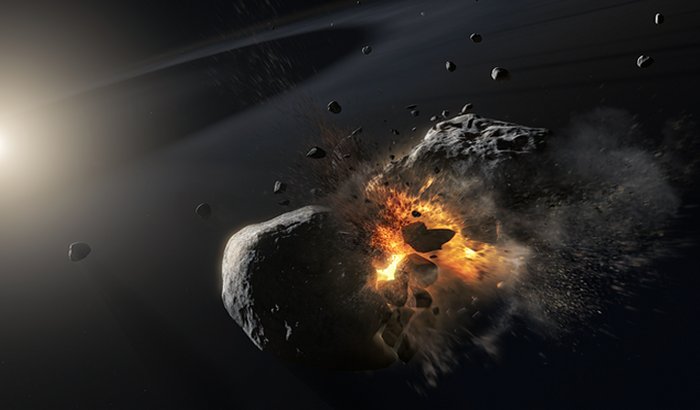 This artist’s illustration depicts the collision of two 125-mile-wide icy, dusty bodies orbiting the bright star Fomalhaut, located 25 light-years away. (Illustration: ESA, NASA and M. Kornmesser)
This artist’s illustration depicts the collision of two 125-mile-wide icy, dusty bodies orbiting the bright star Fomalhaut, located 25 light-years away. (Illustration: ESA, NASA and M. Kornmesser)
Hubble came along too late to witness the suspected collision but may have captured its aftermath, two University of Arizona astronomers say.
The missing-in-action planet was last seen orbiting the star Fomalhaut, 25 light-years away.
“These collisions are exceedingly rare and so this is a big deal that we actually get to see evidence of one,” said András Gáspár, an assistant astronomer at the University of Arizona’s Steward Observatory and lead author of a research paper announcing the discovery. “We believe that we were at the right place at the right time to have witnessed such an unlikely event with NASA’s Hubble Space Telescope.”
George Rieke, a Regents Professor of Astronomy at Steward Observatory said that “the Fomalhaut star system is the ultimate test lab for all of our ideas about how exoplanets and star systems evolve. We do have evidence of such collisions in other systems, but none of this magnitude has been observed in our solar system. This is a blueprint of how planets destroy each other.”
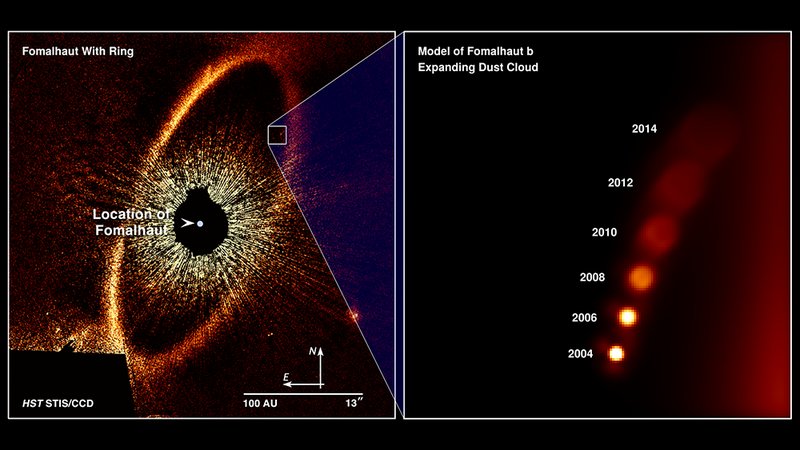 Hubble imaged a vast ring of icy debris encircling the star Fomalhaut. Shown on the right are computer simulations of the expanding and fading cloud. The cloud of very fine dust particles is estimated to stretch more than 200 million miles across. (Image: NASA, ESA, A. Gáspár and G. Rieke/UArizona)
Hubble imaged a vast ring of icy debris encircling the star Fomalhaut. Shown on the right are computer simulations of the expanding and fading cloud. The cloud of very fine dust particles is estimated to stretch more than 200 million miles across. (Image: NASA, ESA, A. Gáspár and G. Rieke/UArizona)
The suspected exoplanet, named Fomalhaut b, was first announced in 2008, based on data from 2004 and 2006. It was clearly visible in several years of Hubble observations, which revealed it was a moving dot.
Unlike other directly imaged exoplanets, however, puzzles arose with Fomalhaut b.
The object was bright in visible light — highly unusual for an exoplanet, which is simply too small to reflect enough light from its host star to be seen from Earth. At the same time, it did not have any detectable infrared heat signature — again, highly unusual, as a planet should be warm enough to shine in the infrared, especially a young one like Fomalhaut b. Astronomers conjectured that the added brightness came from a huge shell or ring of dust encircling the planet that may have been collision-related.
“Our study, which analyzed all available archival Hubble data on Fomalhaut, revealed several characteristics that together paint a picture that the planet-sized object may never have existed in the first place,” Gáspár said.
The team emphasizes that the final nail in the coffin came when their data analysis of Hubble images taken in 2014 showed the object had vanished, to their disbelief. Adding to the mystery, earlier images showed the object to continuously fade over time, they say.
“Clearly, Fomalhaut b was doing things a bona fide planet should not be doing,” Gáspár said.
The interpretation is that Fomalhaut b is slowly expanding from the smashup that blasted a dissipating dust cloud into space.
Taking into account all available data, Gáspár and Rieke think the collision occurred not too long prior to the first observations taken in 2004. By now, the debris cloud — consisting of dust particles around 1 micron in size, or about 1/50th the diameter of a human hair — is below Hubble’s detection limit.
Written by Eddie Gonzales Jr. – MessageToEagle.com Staff

